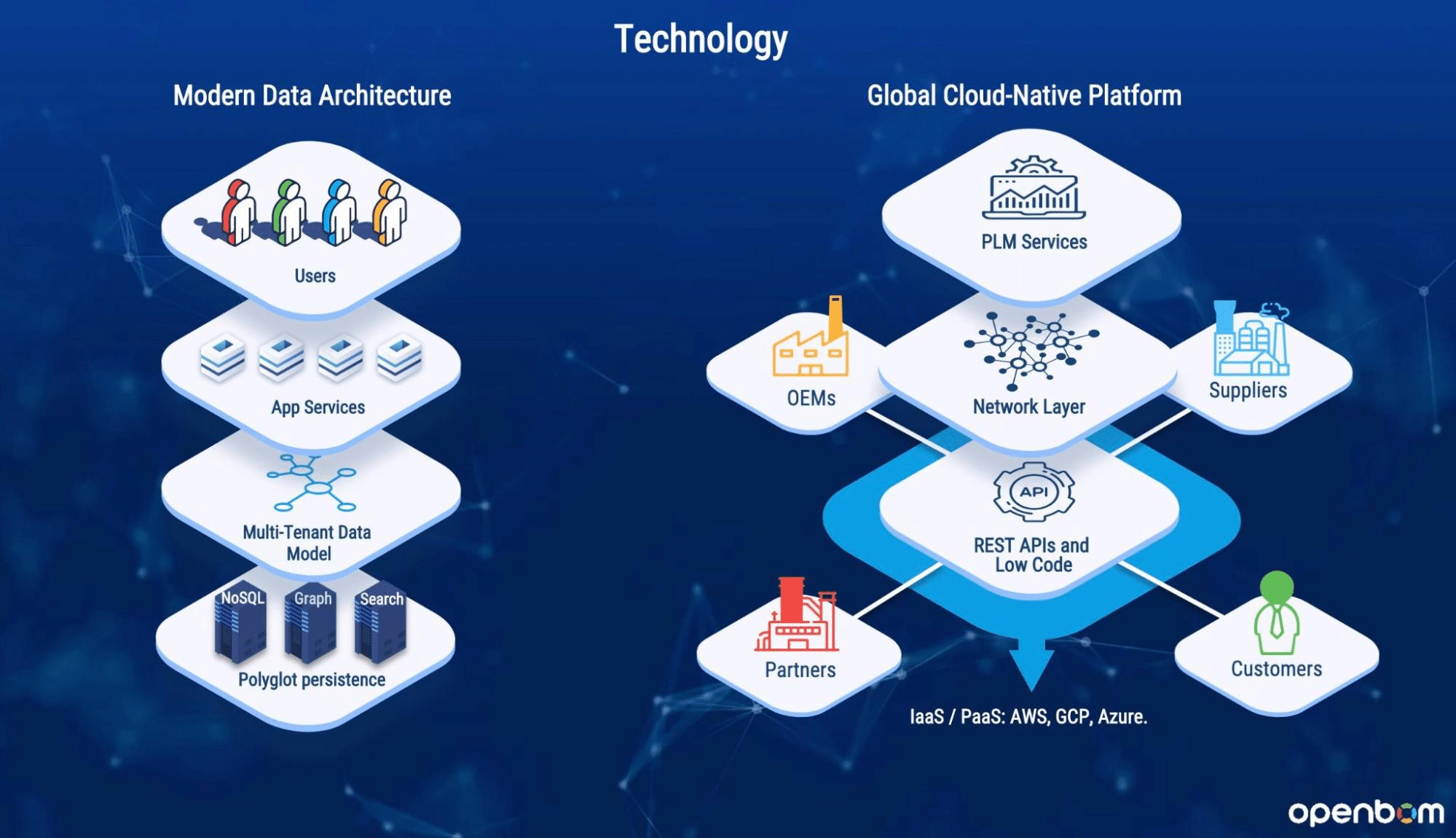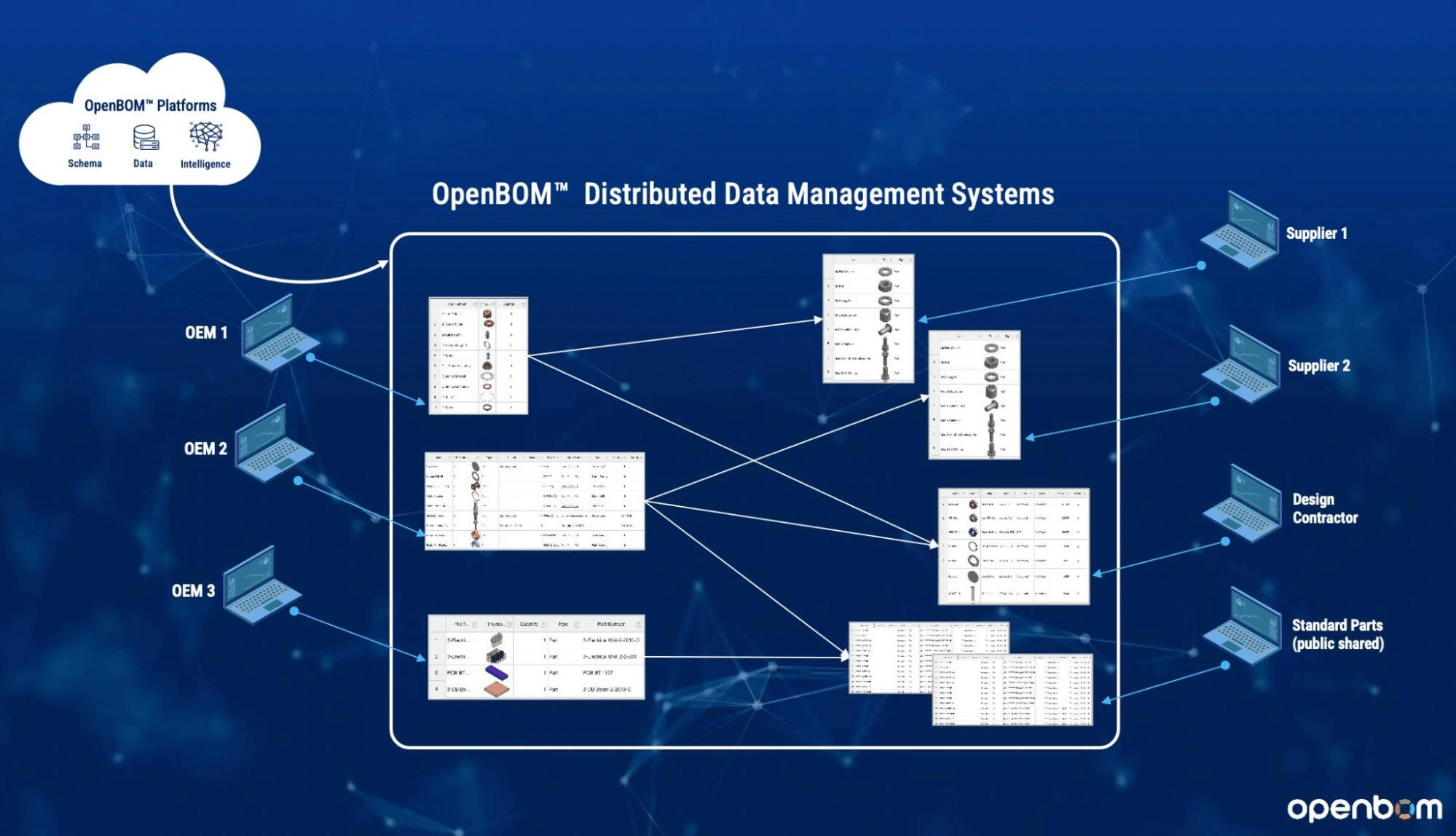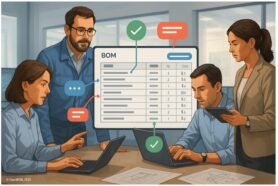
As the manufacturing industry keeps transforming, more and more companies are looking for ways to integrate new technologies into their product development, manufacturing, operations, and maintenance processes. In my last week’s article – A post-monolithic PLM world: Data and System Architecture, I brought examples of how companies are using service-oriented architecture combined with a federated data layer to organize seamless data availability and plug-in-play multiple components (services) from multiple services (PLM) providers. An article from a group Mercedes Benz Cars group is an interesting example to check out – Y. Hooshmand, J. Resch, P. Wischnewski, and P. Patil – From a monolithic PLM landscape to a Federated Domain and Data Mesh. Such a platform approach is a foundation of digital thread – an approach in which product data is connected between multiple lifecycle stages, systems, and organizations.
One area that can provide a lot of value is the use of BOM (Bill of Materials) services. By leveraging a BOM service, manufacturers can quickly and easily create and manage Bills of Materials for their products. In addition, using a semantic federation layer can help improve data quality and interoperability across different systems. This can be valuable for businesses that want to streamline their operations by integrating multiple systems.
In my article today, I will give you an idea of how OpenBOM’s flexible data model and semantic similarity allow meshing data together for sharing data seamlessly and organizing.
Network Layer and Multi-Tenant Platform
OpenBOM global platform provides a foundation for the digital thread by allowing multiple companies to share data instantly. In such a way OEM, suppliers, and contractors can be using a multi-tenant data model, each has its own administration (for the tenant) and, at the same time, use common data resources and share a connected set of information.
OpenBOM foundation relies on polyglot persistence data architecture and organization of multi-tenant network-layer combined with a flexible data model.

There are multiple use cases for the networking layer in PLM data architecture. Here are two most typical use cases.
- Siloed organization (engineering, manufacturing, maintenance)
- Multiple companies (OEM, tier 1 supplier, tier 2 supplier…)
Both are essentially examples of digital threads organized between companies and product lifecycle stages.
Catalogs – Distributed Data Set
Item is anything in the OpenBOM data model. OpenBOM catalogs provide a way to organize multiple item sets representing different objects – eg. standard parts, assemblies, purchased components, software binary components, etc. Each catalog is owned by a specific user (tenant) but can be shared instantly with anyone else.

Once the data is shared, it can be consumed by other participants in the product lifecycle process. However, to be consumed, it might require semantic transformation to apply multiple semantics (eg. attribute names) to be used seamlessly in the business application layer (eg. BOM services).
RDF, OWL, and Semantic Similarity
RDF and OWL are fundamental elements of the Semantic Web technologies stack and it is a commonly accepted standard for data modeling used by multiple companies and organizations for advanced data management and data integrations.
If you never heard about Semantic Web, check out the following video.
OpenBOM similarity modeling is becoming part of CAD extractors and also a modeling language to help share and integrate data coming from multiple data sources or organizations. As such usage of owl:sameAs for similarity of properties between multiple catalog sets. It is an active development, which we’re starting to use experimentally for several implementations at OpenBOM. We are happy to discuss your tasks and how they can be used for your projects.
Conclusion
OpenBOM is developing a semantic layer on top of the flexible data model and multi-tenant data architecture allowing for manufacturing companies to federate data coming from multiple companies and multiple data siloes in the same organization. It is becoming part of the OpenBOM network layer and will allow data to be federated. The BOM service will allow federating data for multiple purposes (eg. supply chain analysis, cost calculation, etc. ). BOM service with federation capabilities can be instantiated in any PaaS platform (Eg. AWS, Azure, GCP, etc.) for the development of industrial applications and connecting data in the digital threads.
OpenBOM is an online service that helps manufacturing companies of any size to use data more efficiently, manage product information and its lifecycle and share data with contractors and suppliers.
REGISTER FOR FREE to check out how OpenBOM can help you and start a 14-day trial today.
Best, Oleg
Join our newsletter to receive a weekly portion of news, articles, and tips about OpenBOM and our community.










